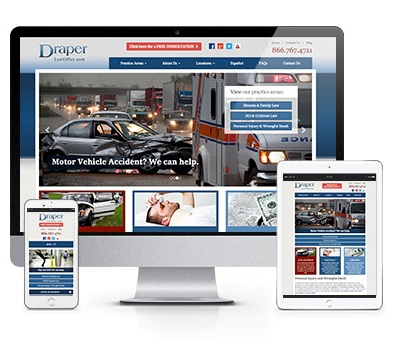
Most business owners or marketers that track their website’s success have
probably heard of a term called ‘bounce rate’.
Bounce rate measures the percentage of visitors who clicked
away from your website (back to search or to another website) right after they
first landed on your website. When you have a high bounce rate and customers
‘click and go’, search engines begin to look at your content’s quality as
questionable and your rankings can suffer.
With this in mind, let’s take a look at the top three
factors that affect bounce rate on your website…
1. Slow Page Load
Time
Sites that load slowly will often experience high bounce
rates as visitors becomes impatient and exit before the site is fully loaded. If
your content isn’t almost immediately accessible, they are likely to click
away.
This is particularly true on mobile devices.
Site speed can be improved in a number of ways:
- Deferring blocking calls to JavaScript
- Optimizing and compressing images
- Compressing and combining HTML and CSS
- Using a server with adequate resources and sold state drives
2. Keywords or
Advertisements are Not Relevant
Getting mixed messages is confusing and nobody likes a bait
and switch. That’s why ensuring that your outward messaging needs to be
reflected on your website and landing pages.
Advertisements and landing pages need to be aligned or your
visitors will be far more likely to bounce. Keeping your messaging and imagery
consistent will allow you to maintain that congruency.
Similarly, your website’s titles and meta descriptions that get
presented on Google need to be consistent with the content of the pages on your
website. Using keywords in your titles and metas that aren’t relevant to your
business to help you get more organic traffic will ultimately just leave you
with a higher bounce rate as visitors realize your business is not what they
were searching for.
 3. Your Website Isn’t
Responsive
3. Your Website Isn’t
Responsive
Responsive Web Design (RWD) is an
approach to web design aimed at providing an optimal experience for your
website visitors by providing a website design that is easy to read, navigate,
and designed to work across a wide range of devices (desktops, tablets, smart
phones, etc.)
As mentioned previously in this post, usability on mobile
devices is essential. If your site is not responsive and doesn’t render well on
mobile devices, your bounce rate will be much higher.
Not only is a responsive design important from a user
experience (UX) standpoint, but it is now also a part of Google’s search
algorithm. Google made the announcement that it
would start incorporating mobile-friendliness into their search results back in
April 2015.
Enhancing Your
Website to Improve Time on Site
To a novice, Bounce Rate may appear very black and white.
Someone comes to the site, and they leave.
But there is another term that marketers use called
“adjusted bounce rate”.
For example, if you write a blog post and someone lands on
it from a Google search, and spends 10 minutes reading your post and then
exits. This could be considered a “bounce” because they never left the page
they entered on.
However, that person was actually very engaged with your
content, so would you really want to consider that as a bounce?
Adjusted bounce rate sets a time frame. So, if a visitor
spends 5 minutes or more on site, it is not counted as a bounce. The time frame could be 2 minutes, 10
minutes, or whatever is desired.
In order to enhance
the time spent on your website, there are a few things you can do including:
- Provide valuable, quality content
- Use bold and attractive imagery
- Consider adding video or story telling graphics
- Add action text links and calls to action (CTA)
- Try A/B testing copy or images
- Ensure you have responsive design
If you have a high bounce rate or you’re looking to enhance
your website’s performance, contact Sales & Marketing Technologies for a
free consultation where we can evaluate your current website and online
performance.
Want to check your website's performance factors, such as your page load speed?
Use our free Website Auditor tool below to see how your
website is currently performing.
Do You Want More
Website Traffic?
Put in your web address and keyword to see how for free.
Want to spy on your competition? Just add their URL too.